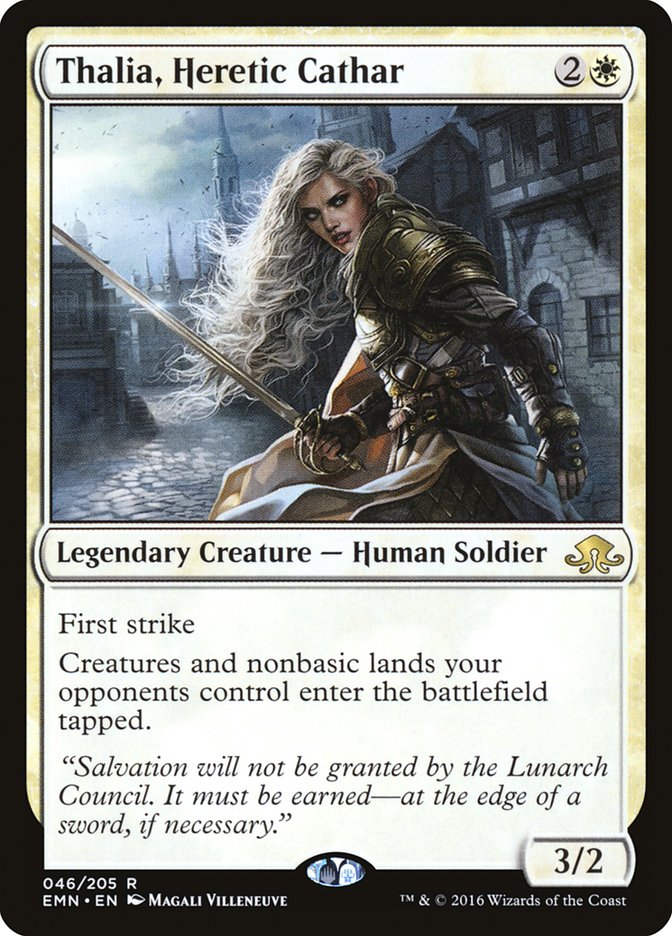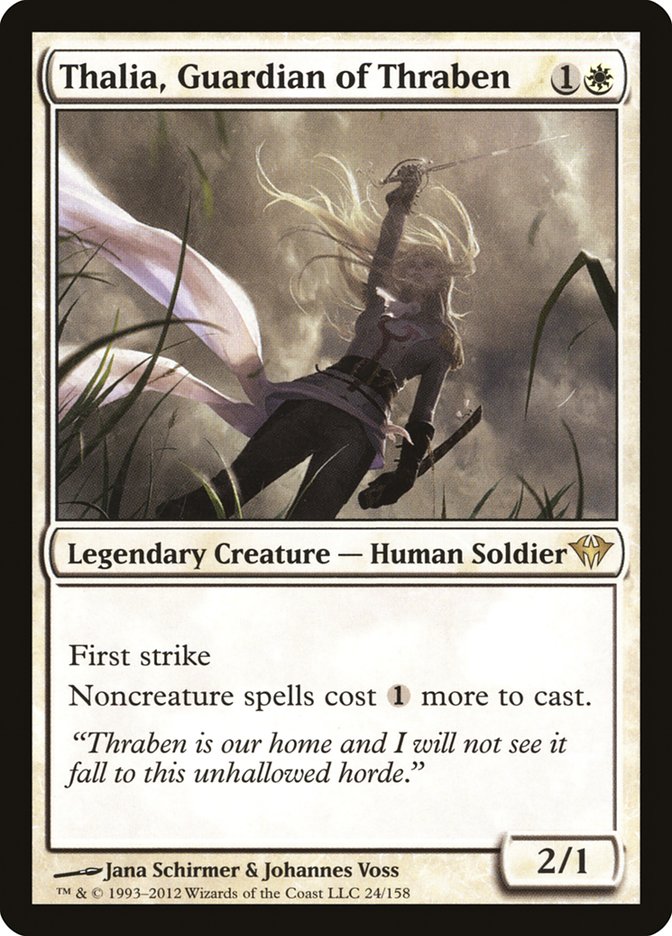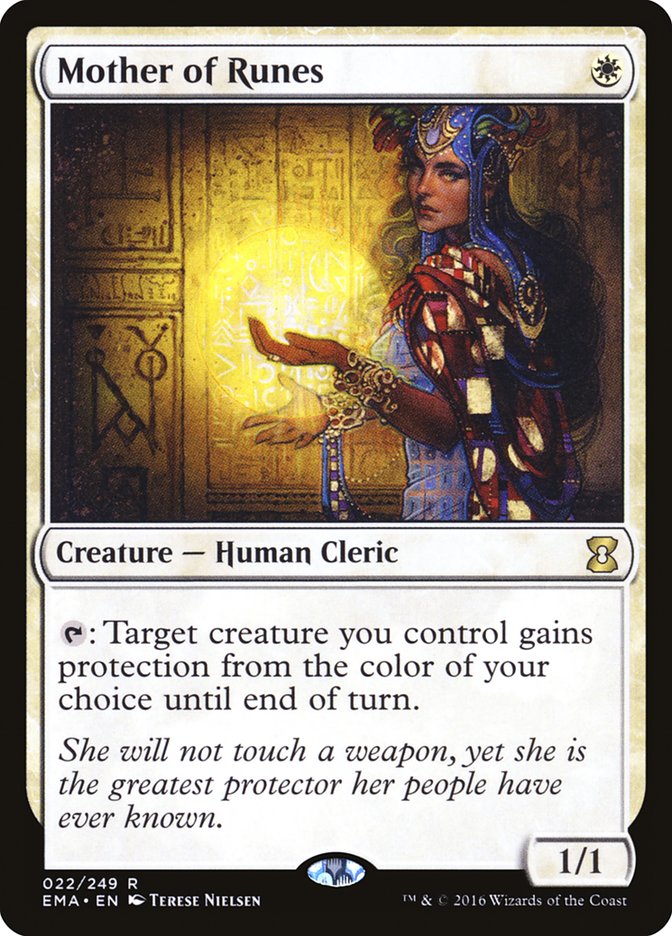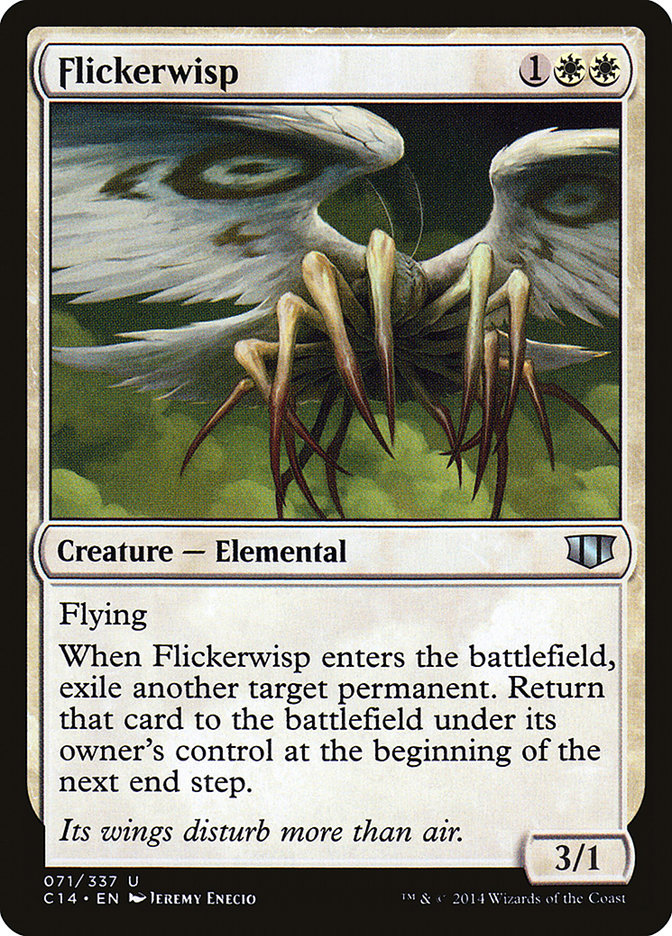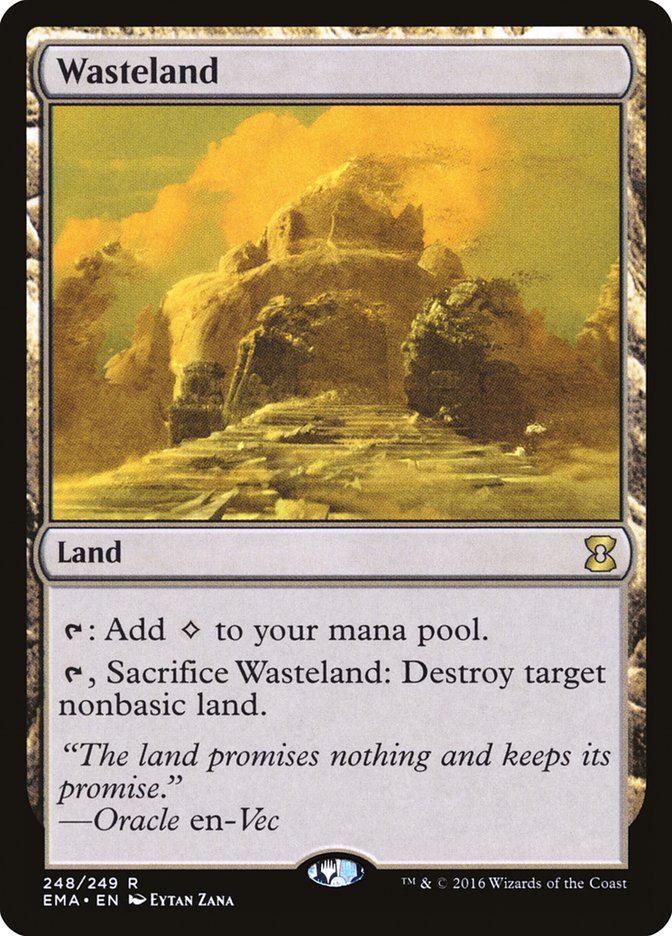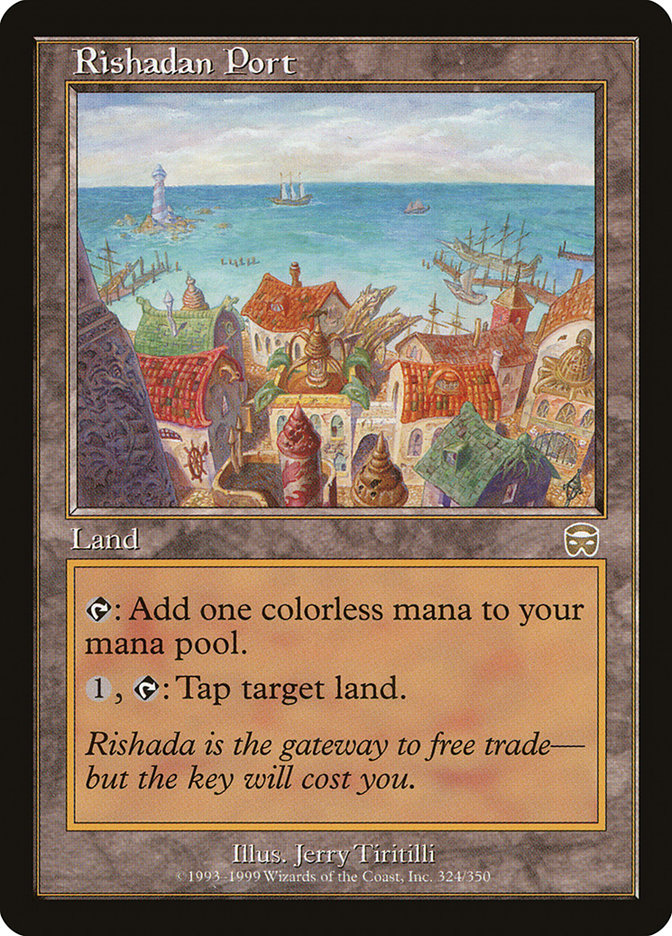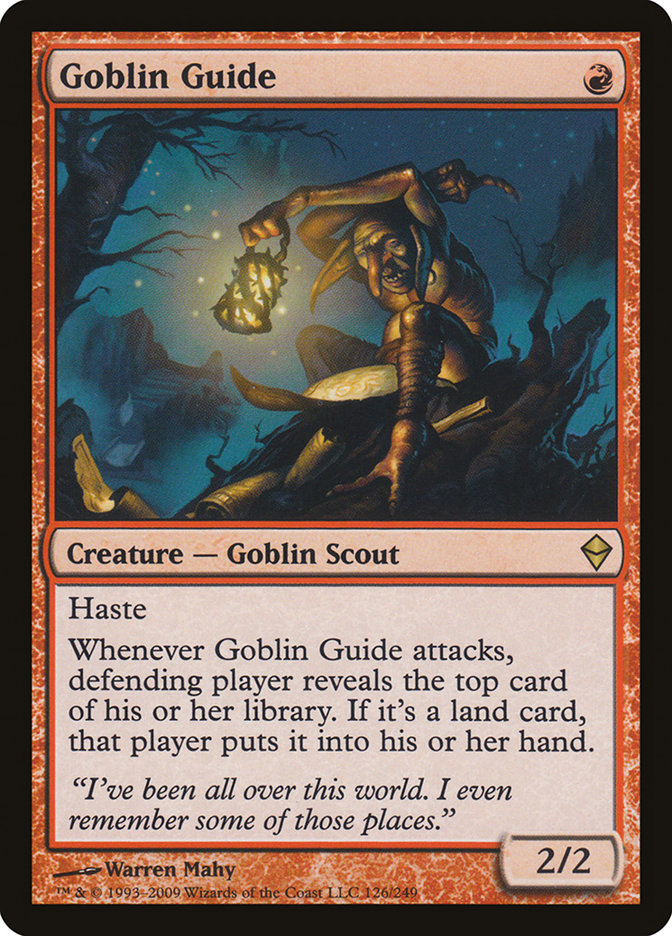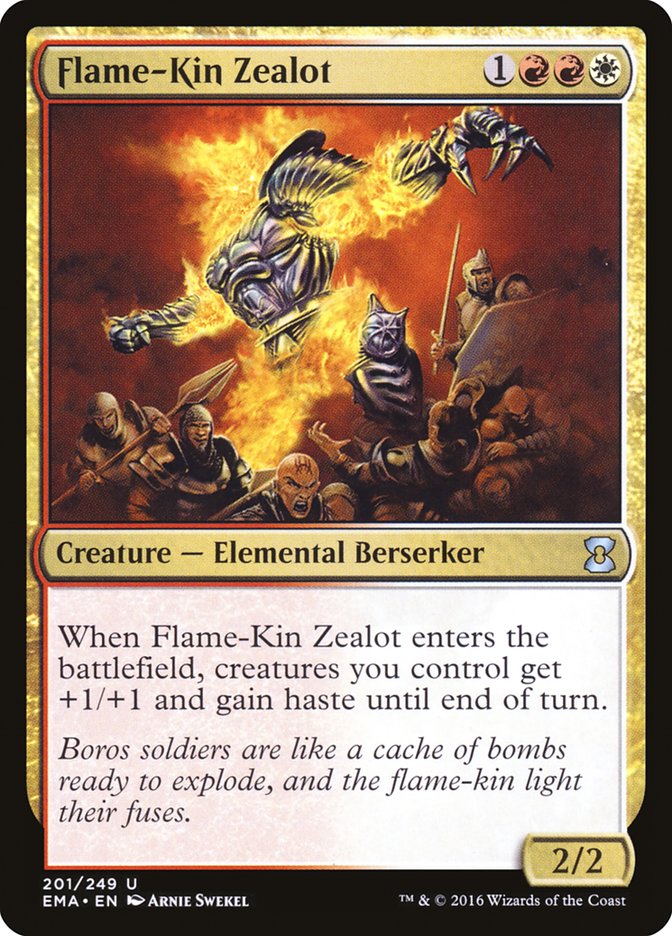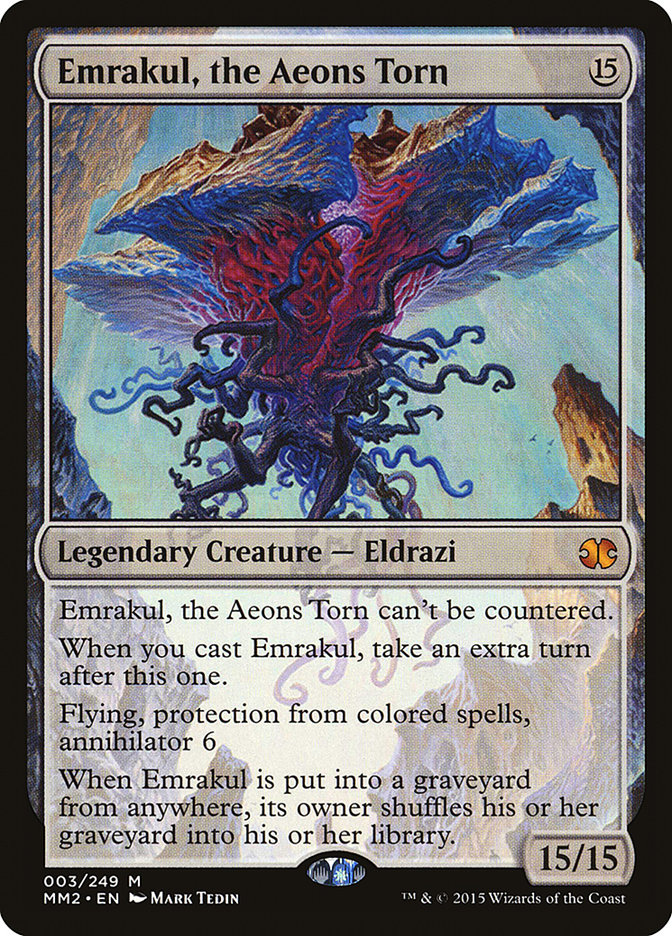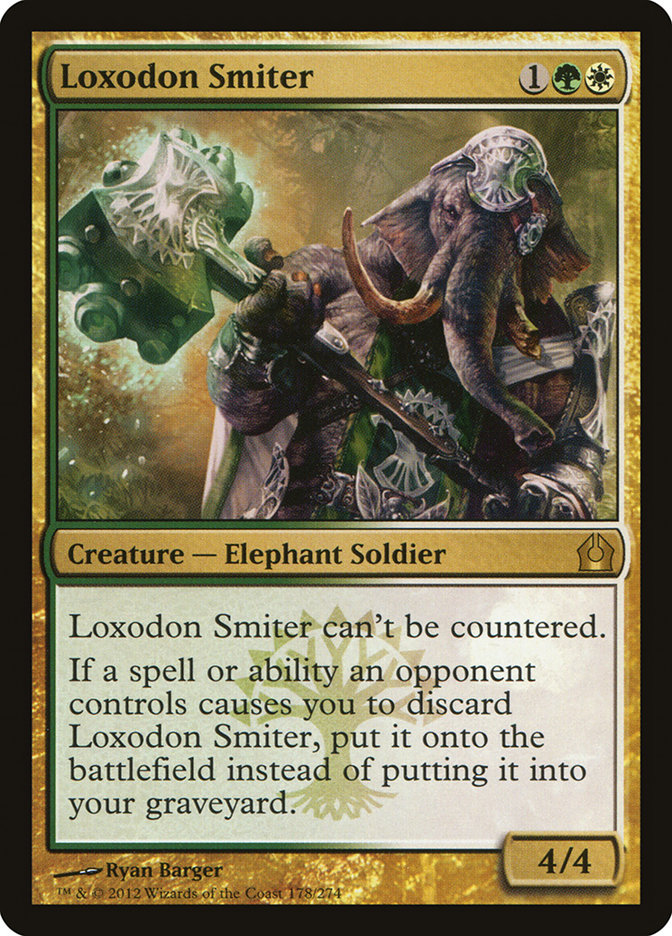The first moment I saw Thalia, Heretic Cathar, I shivered a little. It was a card that I loved for its ability to frustrate an opponent’s plans. And it is a card that made me even more scared to play a controlling deck in Standard.
In Standard, Thalia, Heretic Cathar is obviously worthy of consideration. While clearly Thalia, Guardian of Thraben can’t see play in Standard, the new Thalia seems abundantly obvious as a quality potential choice for the short games that Humans is looking for:
Creatures (31)
- 4 Knight of the White Orchid
- 4 Dragon Hunter
- 3 Kytheon, Hero of Akros
- 3 Anointer of Champions
- 3 Expedition Envoy
- 4 Thraben Inspector
- 4 Thalia's Lieutenant
- 2 Hanweir Militia Captain
- 4 Town Gossipmonger
Lands (18)
Spells (11)

In a deck like this, you are going to get a lot of mileage out of Thalia, Heretic Cathar. While slower decks are the primary target of the card, it may even end up playing quite well against other Humans decks (though it doesn’t do much to swing a tide that is going greatly the other way). It might not be at its best in a deck like Tom Ross’s without some modifications, though, simply because you might be looking for more bang for your buck for the mana cost. Three mana is a lot for a deck that is running so many one-drops that it is only barely managing to run any three-drops.
To me, though, Standard is an aside for the purposes of my exploration of the two Thalias. Looking at them side-by-side really requires Modern and Legacy to see their differences.
When we think about Thalia of any kind, there is a great likelihood that we start at one place: Death and Taxes.
Thomas Enevoldsen is the player perhaps most associated with the Legacy mainstay Death and Taxes at the moment. It is a testament to the strength of the deck that a format which is dominated by cards like this…
…can be fought with cards like this…
Enevoldsen’s recent Top 8 in GP Prague is only the latest of a large line of successes for the deck. Really, one of the major bits of glue that lets the deck hang with the best is Thalia, Guardian of Thraben.
In a format where Brainstorm is ubiquitous, Thalia is a part of a plan which punishes players for trying to cast a large number of tight, mana-efficient spells. Combine this with other pressure that the deck can put on mana, and Death and Taxes becomes a major player in the right hands, though it is difficult enough to pilot that it seems like only experienced Legacy and/or Death and Taxes players can get great finishes – matches can be determined by naming the wrong card with Phyrexian Revoker, for example.
Creatures (26)
- 3 Mother of Runes
- 2 Serra Avenger
- 4 Flickerwisp
- 4 Stoneforge Mystic
- 2 Mirran Crusader
- 4 Phyrexian Revoker
- 4 Thalia, Guardian of Thraben
- 1 Banisher Priest
- 1 Brimaz, King of Oreskos
- 1 Spirit of the Labyrinth
Lands (23)
Spells (11)

The cards that make a “true” Death and Taxes list not possible in Modern are two lands:
Without this portion of the mana denial elements of the deck, you can’t supply the vicious chokehold that Death and Taxes tries to apply. You are stuck trying to piece together Leonin Arbiter with Ghost Quarter, and any attempt you’d like to make in porting over Death and Taxes to Modern ends up so fragile and unlikely that rather than playing the deck like Death and Taxes is meant to be played, you are forced by necessity into a more aggressive stance. Thus, you end up in the realm of Hate Bears.
This isn’t to say that this place is all bad. There have been several decks that have shown no small degree of success with this plan.
Creatures (23)
- 4 Dark Confidant
- 2 Aven Mindcensor
- 4 Kitchen Finks
- 4 Flickerwisp
- 1 Linvala, Keeper of Silence
- 4 Leonin Arbiter
- 2 Thalia, Guardian of Thraben
- 2 Restoration Angel
Lands (22)
Spells (15)

Creatures (30)
- 3 Kitchen Finks
- 3 Wilt-Leaf Liege
- 4 Noble Hierarch
- 2 Qasali Pridemage
- 4 Leonin Arbiter
- 2 Scavenging Ooze
- 3 Thalia, Guardian of Thraben
- 4 Loxodon Smiter
- 4 Voice of Resurgence
- 1 Brimaz, King of Oreskos
Lands (22)
Spells (8)

Both of these decks also run Thalia, Guardian of Thraben, but with a slightly different set of needs, neither deck maxes out their Thalia, Guardian of Thraben because they simply can’t achieve a sleeper hold with the same consistency. Instead, they are more often looking to knock an opponent out of a stable place and finish the game before the opponent regains their footing.
Now, of course, we have a new Thalia.
I suspect this card is going to be wildly popular in Standard and Modern. After a lot of soul-searching, though, I don’t think we’re going to be seeing it much in Legacy.
A part of the problem of Thalia, Heretic Cathar in Legacy is that it is a card that doesn’t do much in the way of helping to fully stop an opponent from playing the game. For the most part, a Death and Taxes player is looking for ways to shut off avenues of escape from the lockdown the deck supplies. The thing that makes Death and Taxes distinct from a White Weenie deck is that the damage it deals is essentially all afterthought.
Where a White Weenie deck, like we see in Standard in the form of various White Humans decks, is generally dedicated to ending the game in short order, you’ll be hard-pressed to find cards in Death and Taxes that fit that description. The first plays of a Death and Taxes deck are either Aether Vial or Mother of Runes, if anything, and Mother of Runes is not typically going to go on the attack on turn 2. A second-turn Thalia, Guardian of Thraben is about as fast as the deck gets. After that, you’re talking about a collection of powerful role-players. The fastest clock the deck can produce, Mirran Crusader, is also just an incredible answer/problem for Tarmogoyf in general, and Shardless Sultai specifically.
Where would Thalia, Heretic Cathar fit in with this collection of role-players?
Land entering the battlefield tapped is certainly a hindrance for the opponent, but what we’re talking about here is closer to a delay. For the same cost, an Aven Mindcensor could potentially cause far bigger problems. At the casting cost we’re talking about, there is a lot of competition, and some choices could have a similar kind of effect, but with even less cost. The payoff? The payoff comes into the equation only if the game is particularly short.
Creatures entering the battlefield tapped for the opponent suffer the same kind of issue. What are these creatures we’re looking to slow down?
Certainly, it is good to stop a hasty creature.
If you’re missing the haste on those last two creatures, that’s because the haste is supplied by other cards. However, in the case of the legends, Karakas is a huge part of the plan in that matchup anyway, and barring that card, more than half the time, Emrakul and Griselbrand aren’t coming out temporarily, but are rather put onto the battlefield via Reanimate or Show and Tell.
Flame-Kin Zealot is a part of a class of rarely-seen cards that Thalia, Heretic Cathar can answer, but most of the cards that might be stopped in a reasonable way by Thalia, Heretic Cathar are so rarely seen as to feel silly to be looking for an answer for. Further, if the problem is really worth answers, stronger, more direct answers are there to be selected from. Goblin Guide comes with a host of other problems, very few of which are answered by a turn 3 3/2.
Thalia, Heretic Cathar is a great card. It just isn’t a fit for what Death and Taxes is trying to do.
However, the story changes a great deal once we get to the shorter game that is a part of Modern.
G/W Hatebears plays many cards that are more dedicated to that fast game.
When you’re playing Loxodon Smiter, yes, it is true that it can be triggered by a Liliana of the Veil, but you’re really making a different claim: “This deck attacks.”
If you’re planning on attacking, then every time an opponent doesn’t get the land onto the battlefield untapped that they’d like to use, that can equate to more damage. Every time a Tarmogoyf or other creature ends up entering the battlefield tapped, that certainly equates to more damage.
Imagine playing this deck against a Thalia, Heretic Cathar that you didn’t kill:
Creatures (13)
Lands (20)
Spells (27)

That is not much in the way of basic lands, and it is very easy to imagine that you might have been forced to use your Thalia-killing cards before the Thalia even got cast. A part of the whole point of your Delve creatures in this deck is that you are expecting to have a wildly cheap creature that can help supply the defense you’re looking for. Thalia, Heretic Cathar is exactly the kind of nightmare you don’t want to be facing. And remember, G/W Hatebears is a deck that is attempting to fill the world with nightmares.
Finding room for Thalia, Heretic Cathar in Modern decks actually feels like it could be reasonably easy. The IQ-winning deck mentioned earlier, G/W Hatebears by Mike Shutov, for example, currently runs three Thalia, Guardian of Thraben. Unlike planeswalkers, these past and future versions of a card don’t care about the Timecop problem.
While I’m not sure exactly how many of the new Thalia I would want to run in a deck like Modern Hatebears, I am sure that I’d want the first Thalia, Heretic Cathar before I’d want the second Thalia, Guardian of Thraben. The specifics of how you’d make those choices are really down to the room that you have in the deck overall based on the other kinds of hate that you might want to be running.
If you’re looking to play a protracted game, and seeking disruption that is more continuous, Thalia, Guardian of Thraben will be the Thalia you prefer. If you’re looking to end games rather than lock them out, you’re more in the market for Thalia, Heretic Cathar. This essential distinction is why I don’t expect to see much of the new Thalia in the older format and why I expect that we’ll likely be seeing the new Thalia in Modern.
Not all mana disruption is created equal, and understanding the differences between them is important to determining proper card selection.


